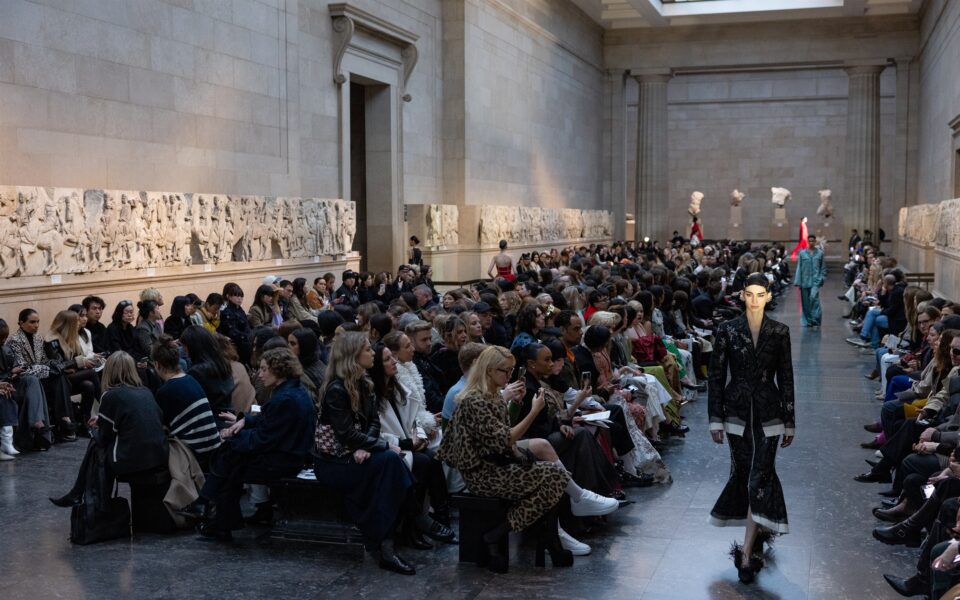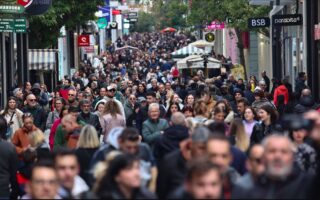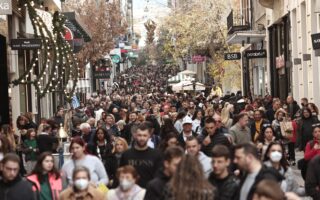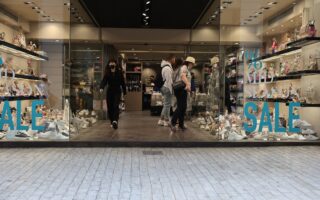Ructions over British Museum catwalk
Fashion show among Parthenon Sculptures revives controversy about exploitation of antiquities

Vogue Editor in Chief Anna Wintour soon found her seat in the front row, as did actors Lily James and Kristin Scott Thomas. It was not the first time that Erdem Moralioglu had invited such A-listers to the British Museum for one of his runway shows at London Fashion Week. In an earlier edition of the premier fashion event, he had presented a collection inspired by the notion of restoration – in a different part of the museum. This time, though, the runway show was in the Duveen Gallery, among the Parthenon Marbles, a space laden with symbolism and at the epicenter of an ongoing historical, political and cultural controversy for the reunification of the ancient Greek sculptures.
The Erdem Fall Winter 2024-25 collection was dedicated to Maria Callas, and specifically to the famed Greek soprano’s performance in the title role of Luigi Cherubini’s “Medea” in 1953. As soon as the show began, Instagram was flooded with snaps that revealed the designer’s collection to be an elegant and dynamic sartorial narrative between Callas the diva and Callas the woman, from past to present, with the fragments of the Parthenon Sculptures in the background.
Uprooting is another theme that ran through the show, titled “Maria, Medea, Myth.” “Like Medea, Callas was uprooted,” said the note on the collection. “The absence of home was poignant and profound.” Is there some connection between La Divina’s personal story with the story of the ancient Greek artifacts that are still in the Duveen Gallery? Perhaps.
The runway show prompted an immediate response from Greece. “The directors of the British Museum have trivialized and insulted not only the monument but also the universal values that it conveys,” Culture Minister Lina Mendoni said in a statement on Saturday night.
In comments to Kathimerini later, she added that the “sculptures were used as a decorative element, without there being any correlation between the values they represent and the fashion show.”
The British Museum, for its part, said that its spaces are used to host commercial events outside of regular visiting hours, with its collections always being a top priority.
‘Monuments may be made of hard stuff, but they are extremely sensitive. And every abuse can rob them of the aura they exude’
Kathimerini reached out to Moralioglu for comment, but the designer preferred to stay out of the row. People who know him personally speak of his love for Greece – which he frequently visits in the summer season – and his passion for opera, for which he has also designed costumes. Born in Canada to a Turkish father and an English mother and raised between Montreal and Birmingham, Moralioglu, who launched his brand in 2005, describes himself as a storyteller – and his show at the British Museum was no exception.
‘Don’t shoot the artist’
In the meantime, at the personal request of Moralioglu, George Manginis, the academic director of the Benaki Museum in Athens, wrote a brief note for the designer on Maria Callas and the notion of her “Greekness.”
“Knowing and esteeming Erdem, a respected artist who lives in the UK, who has Turkish roots and philhellenic sentiments, I accepted the invitation. We shouldn’t ‘shoot’ artists over issues that they have had no hand in,” Manginis told Kathimerini, adding that many major museums often host outside events, and that this is perfectly acceptable.
“However, the museum was wrong in choosing the Parthenon Sculptures gallery for the show – a fact I was unaware of. Given how politicized the issue of the marbles’ reunification has become because of the way the British have handled the matter, the British Museum ought to have been more sensitive to the use of the space and to the feelings it evokes in Greece,” he said.
“Monuments may be made of hard stuff, but they are extremely sensitive. And every abuse can rob them of the aura they exude. If these modern ‘commercial’ uses intensify, there is a risk that they will lose their radiance and be treated with indifference – as a decorative backdrop to our day-to-day – no different than the thousands of images that parade in front of us every day,” noted Panos Valavanis, professor emeritus of archaeology at the University of Athens.
Controversy
The debate about the relationship between fashion and ancient monuments is certainly not new. Speaking of the British Museum, Greek designer Celia Kritharioti presented a collection there in 2020, at the Queen Elizabeth II Great Court. Not to mention when Beyonce shot scenes for a music video in front of the Winged Victory of Samothrace at the Louvre.
In Greece, the Culture Ministry’s Central Archaeological Council (KAS) said no to Italian fashion giant Gucci for a runway show at the Acropolis and yes to London-based Greek designer Mary Katrantzou to present an haute couture collection for the 10th anniversary of her brand and the 30th of the Elpida Foundation for Children with Cancer at the Temple of Poseidon at Sounio in 2019. That same year, Dolce & Gabbana filled the space around the Temple of Concordia in the Valley of the Temples in southern Sicily with an Alta Moda show. And, of course, there was Dior’s resort collection, which was unveiled at the Panathenaic Stadium in Athens in 2021 and was followed by a photoshoot at the Parthenon.
Asked about how the Moralioglu show differs from these instances, Culture Minister Mendoni noted that they cannot be compared. She also stressed that special measures had been taken for the Dior photoshoot at the Acropolis.
“I am not opposed to fashion shows being held in museums; the question is where exactly and how they are held,” she told Kathimerini.





